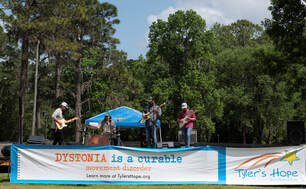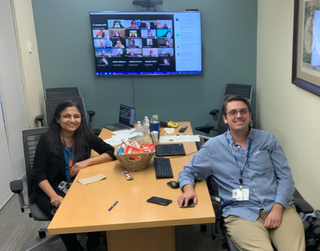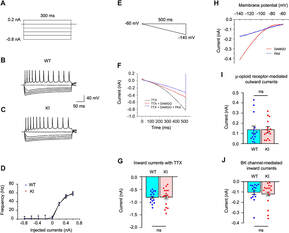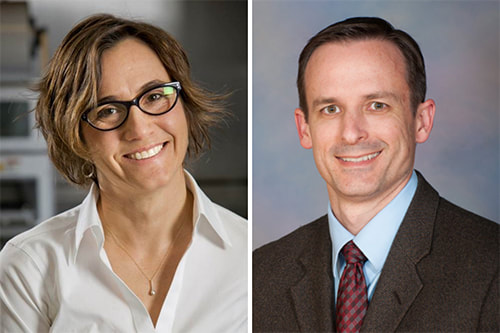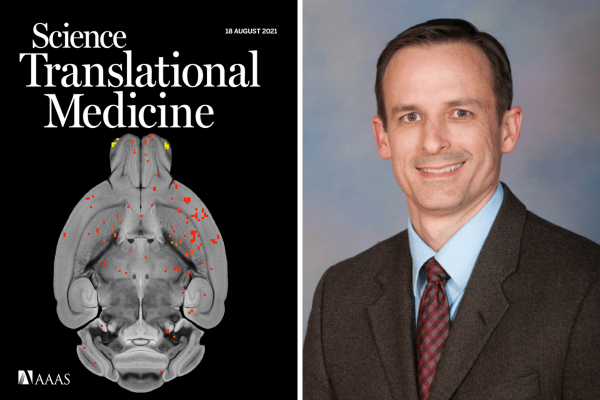2024 Cajun Crawfish Boil
Saturday, April 27th, 2024, Tyler’s Hope for a Dystonia Cure held their 5th Annual Cajun Crawfish Boil at Momentum Labs in Alachua. There was something for all generations and the attendance reflected that. From the cornhole tournament, live music performed by The Medicine Show and the Lowly Worm and the Fantastic Beverages, bounce houses for kids and great food, it was a fun-filled day to support an amazing cause. Supporters in attendance included Eight Judicial Circuit State Attorney Brian Kramer and Alachua County Sheriff Emery Gainey.
“We couldn’t have asked for a better day”, said Tyler’s Hope President & Co-Founder Rick Staab. “The weather was beautiful for an outdoor event. Very fitting to be out at Jaxon labs in the new Momentum Labs building, the home of one of the largest research laboratories in America.
Tyler’s Hope was established 19 years ago to advance research for a cure and to discover effective treatments of dystonia. With Centers of Excellence at UF Health and Duke Health and researchers all across the country, Tyler’s Hope is leading the charge in finding a cure for the third most common movement disorder after Parkinson’s and Tremor. Dystonia impacts more people than Muscular Dystrophy, Huntington’s Disease and Lou Gehrig’s Disease (ALS) combined.
“We couldn’t have asked for a better day”, said Tyler’s Hope President & Co-Founder Rick Staab. “The weather was beautiful for an outdoor event. Very fitting to be out at Jaxon labs in the new Momentum Labs building, the home of one of the largest research laboratories in America.
Tyler’s Hope was established 19 years ago to advance research for a cure and to discover effective treatments of dystonia. With Centers of Excellence at UF Health and Duke Health and researchers all across the country, Tyler’s Hope is leading the charge in finding a cure for the third most common movement disorder after Parkinson’s and Tremor. Dystonia impacts more people than Muscular Dystrophy, Huntington’s Disease and Lou Gehrig’s Disease (ALS) combined.
Cerebellar dysfunction in rodent models with dystonia, tremor, and ataxia
Meike E. van der Heijden1,2* and Roy V. Sillitoe1,2,3,4,5*
- 1Department of Pathology & Immunology, Baylor College of Medicine, Houston, TX, United States
- 2Jan and Dan Duncan Neurological Research Institute at Texas Children’s Hospital, Houston, TX, United States
- 3Department of Neuroscience, Baylor College of Medicine, Houston, TX, United States
- 4Program in Developmental Biology, Baylor College of Medicine, Houston, TX, United States
- 5Development, Disease Models & Therapeutics Graduate Program, Baylor College of Medicine, Houston, TX, United States
Dystonia is a movement disorder characterized by involuntary co- or over-contractions of the muscles, which results in abnormal postures and movements. These symptoms arise from the pathophysiology of a brain-wide dystonia network. There is mounting evidence suggesting that the cerebellum is a central node in this network. For example, manipulations that target the cerebellum cause dystonic symptoms in mice, and cerebellar neuromodulation reduces these symptoms. Although numerous findings provide insight into dystonia pathophysiology, they also raise further questions. Namely, how does cerebellar pathophysiology cause the diverse motor abnormalities in dystonia, tremor, and ataxia? Here, we describe recent work in rodents showing that distinct cerebellar circuit abnormalities could define different disorders and we discuss potential mechanisms that determine the behavioral presentation of cerebellar diseases.
For the full article visit https://www.frontierspartnerships.org/articles/10.3389/dyst.2023.11515/full
For the full article visit https://www.frontierspartnerships.org/articles/10.3389/dyst.2023.11515/full
Thanks to the support of so many sponsors and friends, 2022 has been a huge success! We spent the year raising money for vital research, spreading awareness, and celebrating new breakthrough discoveries. Your commitment to Tyler's Hope for a Dystonia Cure and the dystonia community we serve makes all the difference in the world.
No matter what holiday you celebrate, we hope you had a wonderful holiday season and wish you a peaceful and prosperous new year!
No matter what holiday you celebrate, we hope you had a wonderful holiday season and wish you a peaceful and prosperous new year!
Annual Report
2022 Events
|
Crawfish Boil
Thank you for supporting the annual Crawfish Boil. We raised over $30,000! Our loyal participants enjoyed an afternoon of authentic Cajun crawfish boil and gumbo, entertaining music, plenty of libations, and competitive corn hole game. Think Tank - Summit
Each year the world’s most promising Dystonia researchers gather annually for the Summit on Novel Approaches to a Cure for DYT-1 Dystonia. This year over 100 specialists shared their findings and advancements to further advance efforts to find a cure! |
The Hope Weekend
The 2022 Hope Weekend did not disappoint. Supporters spent three days celebrating the accomplishments of the researchers throughout the year while raising funds that have a direct impact. During the event we were able to raise over $225,000! Season of Hope 5k/15k
The Season of Hope is held each December in partnership with the University of Florida Movement Disorder Center to raise funds for the fellowship program at the Tyler’s Hope Center of Excellence |
New Board Members
|
Carl Smith has been involve with the foundation since its inception. Over the years he has served as a volunteer, advocate, and donated countless dollars toward research. We welcomed Carl on the board officially in 2021 and he continues to make a tremendous impact
|
Daurine Wehbe has been supporting Tyler's Hope since the foundation was established in 2006. She knows the cure for dystonia is within reach and is proud to work with the organization to find a cure and bring relief to millions of people around the world.
|
Centers of Excellence
|
In September the Tyler’s Hope for a Dystonia Cure Foundation announced that Duke University has received the organization's highest honor for excellence in research, education, and service. To receive this designation, Duke demonstrated a focus on dystonia as a neurological movement disorder and achieved significant breakthroughs in the science towards finding a cure.
This new partnership with Duke will strengthen their efforts to find a cure for all people with dystonia. Dr. Nicole Calakos and colleagues of the Duke University School of Medicine in Neurogenetics discovered that 18 FDA-approved medications have the potential to correct cellular and brain abnormalities associated with dystonia. Further analysis of the 18 medications revealed that ritonavir had the greatest potential. |
This scientific discovery, in addition to the infrastructure provides both clinical treatment and research in dystonia. The institution also provides resources to develop the next generation or researchers and clinicians in dystonia through the robust fellowship program.
Tyler's Hope Funded Breakthrough Discovery
Using drug screening, drug testing and imaging methods, researchers reported that ritonavir corrected abnormal protein features in the brain and had therapeutic effects in a mouse model of DYT1, restoring multiple brain abnormalities. The mice received higher concentrations of the medication than humans are given for HIV treatment, so human clinical trials are needed to test dosage levels and safety, the researchers said, and to determine whether the same results are found in people. David Vaillancourt, Ph.D., chair of the department of applied physiology and kinesiology in the University of Florida College of Health & Human Performance and director of the neuroimaging laboratory at the Norman Fixel Institute for Neurological Diseases at UF Health analyzed MRI data for the research team, which was led by Nicole Calakos, M.D., Ph.D., a professor of neurobiology and neurology at Duke University. Calakos said she is encouraged that the MRI findings showed lasting correction in the mice after a brief treatment with ritonavir and hopes that the drug holds potential not just to address symptoms of dystonia but possibly treat the underlying cause.
Important Dates
Duke COE Ribbon Cutting: March 20th
Crawfish Boil: April 22nd
Think Tank: October 20th
The Hope Weekend: October 19-21st
Season of Hope: December 9th
Crawfish Boil: April 22nd
Think Tank: October 20th
The Hope Weekend: October 19-21st
Season of Hope: December 9th
Researchers at the Tyler's Hope Center of Excellence at the University of Florida publish work on the characterization of cholinergic neurons in DYT1 dystonia
Research Grants awarded to Advance Understanding of Dystonia
Congratulations To Dr. Stephanie Cernera and Dr. Jun Yu. Dr. Yu was awarded an clinical fellowship and Dr. Cernera a research fellowship for, "Beyond Theta: Analyzing oscillations across the frequency spectrum in patients with dystonia implanted with sensing-enabled pulse generators".
Tyler's Hope grant funds breakthrough in the fight to end DYT1 dystonia
|
By Todd Taylor
A new study found that an FDA-approved medication to treat HIV restored multiple brain abnormalities in a mouse model of a genetic form of dystonia. Dystonia is a neurological movement disorder that causes muscles to contract involuntarily, leading to repetitive or twisting movements that limit independence and might also cause pain. The preclinical findings were featured on the cover of the Aug. 18 edition of the journal Science Translational Medicine. Using drug screening, drug testing and imaging methods, researchers reported that ritonavir corrected abnormal protein features in the brain and had therapeutic effects in a mouse model of DYT1, restoring multiple brain abnormalities. DYT1 dystonia is an early-onset genetic form of the disorder. The mice received higher concentrations of the medication than humans are given for HIV treatment, so human clinical trials are needed to test dosage levels and safety, the researchers said, and to determine whether the same results are found in people. “We hope that this study will provide a promising therapeutic target in DYT1 dystonia, which is desperately needed for patients suffering from this disorder and their families,” said co-author David Vaillancourt, Ph.D., chair of the department of applied physiology and kinesiology in the University of Florida College of Health & Human Performance and director of the neuroimaging laboratory at the Norman Fixel Institute for Neurological Diseases at UF Health. Vaillancourt analyzed MRI data for the research team, which was led by Nicole Calakos, M.D., Ph.D., a professor of neurobiology and neurology at Duke University. Calakos said she is encouraged that the MRI findings showed lasting correction in the mice after a brief treatment with ritonavir and hopes that the drug holds potential not just to address symptoms of dystonia but possibly treat the underlying cause. “We were really struck by the range of DYT1 abnormalities that the drug was effective against. We think that this may indicate that the drug is acting close to the root cause,” Calakos said. “A critical next step will be to figure out how to get ritonavir into the brain at higher levels and then test whether it is safe for people in those concentrations.” The study was supported by a grant from Tyler’s Hope for a Dystonia Cure, a Gainesville-based foundation dedicated to advancing DYT1 dystonia research and promoting awareness and education of the disorder. “This work is a great example of researchers collaborating and breaking down some of the barriers that have historically impeded progress by being siloed,” said Rick Staab, co-founder of Tyler’s Hope for a Dystonia Cure. “This is an exciting breakthrough and although there are more steps to go, I believe these findings will prove to have a huge impact on our quest to provide better treatments and ultimately find a cure for this devastating disorder.” Support for the study also was provided by the Harrington Discovery Institute Scholar-Innovator award; Department of Defense grant PR180747; National Institutes of Health grant R01 NS075012; the Intramural Research Program of the National Center for Advancing Translational Sciences; and partial support from Duke University’s Clinical and Translational Science Award. |
(From left) Nicole Calakos, M.D., Ph.D., and David Vaillancourt, Ph.D., are authors of the study.
|






